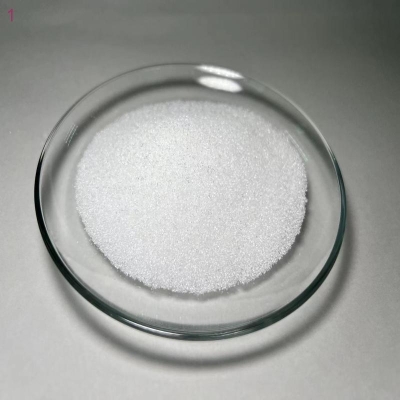-
Categories
-
Pharmaceutical Intermediates
-
Active Pharmaceutical Ingredients
-
Food Additives
- Industrial Coatings
- Agrochemicals
- Dyes and Pigments
- Surfactant
- Flavors and Fragrances
- Chemical Reagents
- Catalyst and Auxiliary
- Natural Products
- Inorganic Chemistry
-
Organic Chemistry
-
Biochemical Engineering
- Analytical Chemistry
- Cosmetic Ingredient
-
Pharmaceutical Intermediates
Promotion
ECHEMI Mall
Wholesale
Weekly Price
Exhibition
News
-
Trade Service
[ Focus on Chemical Machinery Equipment Network ] The development of science and technology has a huge driving force for the entire society.
Looking at the world, every major breakthrough in science and technology will set off a huge wave of change in the economic field and social development.
*The sub-industrial revolution ushered in the era of replacing manual labor with machines, which brought us into the era of large-scale machine production; the third technological revolution not only* promoted the economic, political, and cultural development of human society, but also profoundly affected people Way of thinking and life>
Chemical machinery and equipment network hotspots pay attention to chemical machinery and equipmentLooking at the world, every major breakthrough in science and technology will set off a huge wave of change in the economic field and social development.
*The sub-industrial revolution ushered in the era of replacing manual labor with machines, which brought us into the era of large-scale machine production; the third technological revolution not only* promoted the economic, political, and cultural development of human society, but also profoundly affected people Way of thinking and life>
Asking it to be clear as promised, as a source of fresh water, innovation is an inexhaustible driving force for the development of science and technology, and it is also a source of strength for the sustainable development of a nation and a country.
In 2020, although China and even * have suffered a disaster, after scientists have concentrated on their research, my country has still made outstanding achievements in the field of science and technology.
Below, the editor compiled some of the results achieved in the field of inspection and testing in 2020 for readers.
In 2020, although China and even * have suffered a disaster, after scientists have concentrated on their research, my country has still made outstanding achievements in the field of science and technology.
Below, the editor compiled some of the results achieved in the field of inspection and testing in 2020 for readers.
SERS biochemical testing has made phased progress to provide new ideas for liquid biopsy analysis and other technologies
SERS biochemical testing has made phased progress to provide new ideas for liquid biopsy analysis and other technologiesSERS refers to surface-enhanced Raman, which overcomes the shortcomings of low sensitivity of Raman spectroscopy, and can obtain structural information that is not easily obtained by conventional Raman spectroscopy.
SERS can effectively analyze the adsorption orientation of compounds on the interface, the change of adsorption state, and the interface information, so it is widely used in surface research, adsorption interface surface state research, interface orientation and configuration of biological large and small molecules, conformation research, and structure analysis.
SERS can effectively analyze the adsorption orientation of compounds on the interface, the change of adsorption state, and the interface information, so it is widely used in surface research, adsorption interface surface state research, interface orientation and configuration of biological large and small molecules, conformation research, and structure analysis.
Researcher Chen Dapeng’s research team from the Integrated Circuit Leading Technology Research and Development Center of the Institute of Microelectronics and Professor Xiong Jijun from North University of China proposed an open SERS droplet sensor , which breaks the complex manufacturing process problems required by traditional substrate-based SERS devices.
The porosity and fragility of the gray nanochain structure form a SERS active droplet with abundant three-dimensional "hot spots" on the substrate in a rolling manner, thereby greatly enhancing the Raman detection performance of the droplet.
The design and development of the SERS droplet sensor provides a new detection concept for liquid biopsy analysis and other technologies.
sensorThe porosity and fragility of the gray nanochain structure form a SERS active droplet with abundant three-dimensional "hot spots" on the substrate in a rolling manner, thereby greatly enhancing the Raman detection performance of the droplet.
The design and development of the SERS droplet sensor provides a new detection concept for liquid biopsy analysis and other technologies.
Tumor treatment methods or progress, molecular imaging technology has new discoveries
Tumor treatment methods or progress, molecular imaging technology has new discoveriesTumor is an abominable and common disease.
Data shows that my country spends more than 220 billion yuan in medical expenses on malignant tumors each year.
With the incidence and death of malignant tumors showing a continuous upward trend, malignant tumors have become one of the main public health problems that seriously threaten the health of Chinese people.
Data shows that my country spends more than 220 billion yuan in medical expenses on malignant tumors each year.
With the incidence and death of malignant tumors showing a continuous upward trend, malignant tumors have become one of the main public health problems that seriously threaten the health of Chinese people.
In order to reduce the mortality rate of cancer and protect people's life safety and health, many scientific researchers have conducted in-depth research on the pathogenesis and mechanism of tumors.
*Shenzhen* The team of Liu Chengbo, associate researcher of the Biomedical Optics and Molecular Imaging Center of the Institute of Medical Engineering, the team of Jonathan, a professor of the Department of Chemistry at the University of Texas at Austin, and the team of Jong Seung, a professor of the Department of Chemistry at Korea University, Korea Tumor-specific three-dimensional photoacoustic molecular imaging.
*Shenzhen* The team of Liu Chengbo, associate researcher of the Biomedical Optics and Molecular Imaging Center of the Institute of Medical Engineering, the team of Jonathan, a professor of the Department of Chemistry at the University of Texas at Austin, and the team of Jong Seung, a professor of the Department of Chemistry at Korea University, Korea Tumor-specific three-dimensional photoacoustic molecular imaging.
It only takes 5 minutes to successfully develop the rapid inspection of pesticide residues based on artificial intelligence
It only takes 5 minutes to successfully develop the rapid inspection of pesticide residues based on artificial intelligence Mobile phone is one of the indispensable products in my life and work.
But if you have used your mobile phone for so long, do you believe that in addition to playing games, studying, working, and communicating, can your mobile phone be used for pesticide residue detection?
But if you have used your mobile phone for so long, do you believe that in addition to playing games, studying, working, and communicating, can your mobile phone be used for pesticide residue detection?
A new technology developed by the Chinese Academy of Agricultural Sciences team gives mobile phones a new function-rapid detection of pesticide residues.
According to the Science and Technology Daily, the "Agricultural Chemical Pollutant Residue Detection and Behavior Research Innovation Team" of the *Agricultural Quality Standards and Testing Technology Institute has developed a new pesticide residue after years of continuous intensive cultivation in the field of rapid pesticide residue detection technology.
Quick inspection technology-With the help of a WeChat applet to take pictures, users can complete a variety of pesticide residue tests within 5 minutes.
The test information is directly displayed on the mobile phone and the content can be shared online.
According to the Science and Technology Daily, the "Agricultural Chemical Pollutant Residue Detection and Behavior Research Innovation Team" of the *Agricultural Quality Standards and Testing Technology Institute has developed a new pesticide residue after years of continuous intensive cultivation in the field of rapid pesticide residue detection technology.
Quick inspection technology-With the help of a WeChat applet to take pictures, users can complete a variety of pesticide residue tests within 5 minutes.
The test information is directly displayed on the mobile phone and the content can be shared online.
Qingdao Energy Institute developed the second-generation Raman activated cell ejection coupled sequencing technology
Qingdao Energy Institute developed the second-generation Raman activated cell ejection coupled sequencing technology Raman activated cell ejection coupled sequencing (RACE-Seq) is one of the methods of single cell analysis of the microbiome, but its genome coverage is usually no more than 10%, and the success rate of nucleic acid amplification is low, which limits its application.
*The Single Cell Center of Qingdao Institute of Bioenergy and Processes systematically evaluated and optimized the technology, and improved the single-cell genome amplification link, thereby improving the genome coverage and nucleic acid amplification success rate of RACE-Seq.
*The Single Cell Center of Qingdao Institute of Bioenergy and Processes systematically evaluated and optimized the technology, and improved the single-cell genome amplification link, thereby improving the genome coverage and nucleic acid amplification success rate of RACE-Seq.
In order to reveal the reason for the extremely low coverage of the RACE-Seq genome, the research team led by Su Xiaolu and Gong Yanhai from the Single Cell Center established a systematic RACE-Seq from the perspectives of experimental operation and data calculation and analysis based on the best efforts.
Method and chip quality assessment and control system.
In response to these problems, the researchers developed the second-generation RACE-Seq to add a specific oil phase to the single-cell amplification system and oscillate sufficiently to produce a large number of randomly packaged micro-volume droplets, causing each DNA fragment to be uniform before demulsification.
Achieve saturation amplification, thereby greatly improving the coverage of single-cell genomes in RACE-Seq.
This method of operation is simple, fast, and easy to automate.
Method and chip quality assessment and control system.
In response to these problems, the researchers developed the second-generation RACE-Seq to add a specific oil phase to the single-cell amplification system and oscillate sufficiently to produce a large number of randomly packaged micro-volume droplets, causing each DNA fragment to be uniform before demulsification.
Achieve saturation amplification, thereby greatly improving the coverage of single-cell genomes in RACE-Seq.
This method of operation is simple, fast, and easy to automate.
Another application of spectroscopy in clinical medicine: breakthrough in near-infrared two-zone fluorescence imaging technology
Another application of spectroscopy in clinical medicine: breakthrough in near-infrared two-zone fluorescence imaging technology The imaging system is an important guide in the surgical treatment process, and the clear image can improve the accuracy and success rate of the operation.
As optical fluorescence imaging technology has been widely used in biological research, researchers have also begun to use fluorescence imaging in tumor treatment, and try to solve the problem of converting the technology into clinical applications.
As optical fluorescence imaging technology has been widely used in biological research, researchers have also begun to use fluorescence imaging in tumor treatment, and try to solve the problem of converting the technology into clinical applications.
*The Molecular Imaging Key Laboratory of the Institute of Automation has successfully developed a new type of near-infrared two-area fluorescence imaging system and surgical navigation technology, successfully applied near-infrared two-area fluorescence imaging in the surgical treatment of liver cancer, and solved the clinical problem of near-infrared two-area fluorescence imaging The problem of conversion.
Studies have found that this technology can detect small liver cancer lesions and metastases that are difficult to find in other imaging modalities, and significantly improve the accuracy of surgical resection.
Studies have found that this technology can detect small liver cancer lesions and metastases that are difficult to find in other imaging modalities, and significantly improve the accuracy of surgical resection.
As the saying goes, there is no way to reach thousands of miles without accumulating steps, and without accumulating small currents, there is no way to become a sea.
I believe that every new achievement is the preface of a larger scientific research result.
I believe that every new achievement is the preface of a larger scientific research result.
Original title: 2020 year-end inventory: new technologies in the field of inspection and testing







